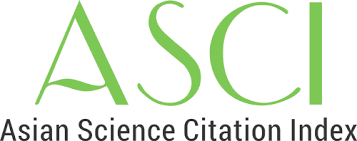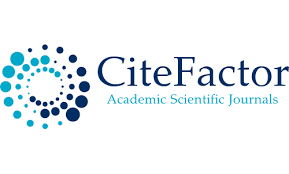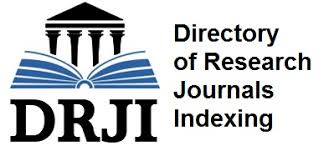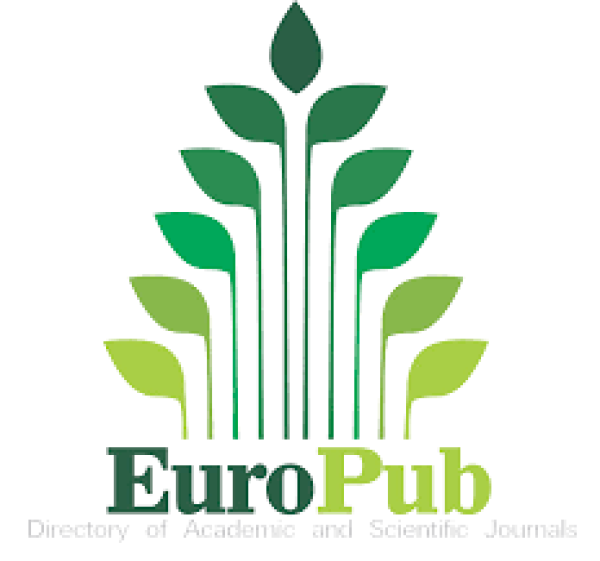KAP and Oral Hygiene: Understanding Endocarditis Risk in Sindh's Low-Income Communities
Abstract
Background of the study: Poor oral hygiene has been associated with systemic health problems, including infective endocarditis, especially in socioeconomically deprived populations. This study explores the knowledge, attitudes, and practices (KAP) of low-income groups in Sindh, Pakistan, regarding oral hygiene and their relationship with the risk of endocarditis.
Methodology: A stratified purposive sampling method was used to collect data from 176 adults in various districts of Sindh through a structured questionnaire. Structural Equation Modeling (SEM) was used to explore the relationships between oral hygiene behaviors, knowledge, and the risk of endocarditis. In detail, key barriers, such as access to dental care, oral health literacy, and economic challenges, were examined.
Results: The study findings indicated significant knowledge and practice gaps in oral health, with a strong association between poor oral hygiene and increased risk of endocarditis. Low socioeconomic status was a critical determinant that underscored the need for accessible dental care and public health education. Targeted interventions, such as oral health awareness campaigns and affordable dental services, showed promise in reducing oral infections and systemic health risks.
Conclusions: The current research draws attention to the urgent need for the mitigation of endocarditis by tackling oral health disparities among vulnerable populations. Improving oral hygiene practices and systemic health outcomes among the low-income population in Sindh will be achievable through community-based programs and interventions that are designed accordingly.
References
1. Adeniyi A, Sofola O, Kalliecharan R. Oral health knowledge and its association with systemic diseases in underserved Nigerian communities. Afr J Med Health Sci. 2019;18(1):112-8.
2. Ahmed M, Khan N, Fatima S. Oral health as a contributing factor to infective endocarditis in Pakistan’s underserved communities. Pak J Cardiol. 2022;14(4):89-95.
3. Al-Ababneh M. Linking ontology, epistemology, and research methodology. Sci Philos. 2020;8(1):75-91.
4. Ali SM, Tasneem S. Oral health knowledge and challenges in underserved populations of Karachi, Sindh. Pak Oral Health J. 2021;39(3):213-9.
5. Al-Quran FA, et al. Influence of Health Belief Model on Oral Hygiene in Pregnant Women. Int J Environ Res Public Health. 2021;18(4):2060.
6. Anwar S, Iqbal S, Rizvi S. Oral hygiene practices and knowledge gaps in lower socioeconomic groups in Karachi, Pakistan. J Community Health Dent. 2020;38(2):104-9.
7. Beyene DH, Shashamo BB, Digesa LE, Tariku EZ. Oral hygiene practices and associated factors among patients visiting private dental clinics at Hawassa City, Southern Ethiopia, 2018. Int J Dent. 2021;2021:8868308. https://doi.org/10.1155/2021/8868308.
8. Casula M, Rangarajan N, Shields P. The potential of working hypotheses for deductive exploratory research. Qual Quant. 2021;55(5):1703-25.
9. Chen L, et al. Role of patient attitudes in preventive dental care. Prev Med Rep. 2019;14:100852. https://doi.org/10.1016/j.pmedr.2019.100852.
10. Dyer TA, et al. Application of the Health Belief Model in Preventive Oral Health: A Systematic Review. BMC Oral Health. 2020;20(1):60.
11. Farooq A, Saleem M, Qazi S. Impact of oral health education on knowledge and practices in low-income communities of Karachi. Int J Public Health Dent. 2022;12(1):27-34.
12. Ganss C, Heins M, Schlueter N. Evaluating the impact of consistent oral care routines. PLOS ONE. 2019;14(12)
13. Gomes BPF, Berber VB, Chiarelli-Neto VM, et al. Microbiota present in combined endodontic-periodontal diseases and its risks for endocarditis. Clin Oral Investig. 2023;27:4757–4771. https://doi.org/10.1007/s00784-023-04666-2.
14. Green J, Hanckel B, Petticrew M, Paparini S, Shaw S. Case study research and causal inference. BMC Med Res Methodol. 2022;22(1):307.
15. Griffin SO, Jones JA, Brunson D. Disparities in oral health and their impact on cardiovascular diseases in underserved U.S. populations. Am J Prev Med. 2020;59(3):367-74.
16. Handayani I, Apriani D, Mulyati M, Zahra ARA, Yusuf NA. Enhancing security and privacy of patient data in healthcare: A smartPLS analysis of blockchain technology implementation. IAIC Trans Sustain Digit Innov. 2023;5(1):8-17.
17. Hlatshwako TG, Shah SJ, Kosana P, Agyekum S. Exploring the barriers to health care utilization among people living with HIV in Eswatini: A qualitative study. BMC Health Serv Res. 2023;23(1):41.
18. Hu Y, Liu Z. The Role of Health Belief Model in Health Behavior Change Among Adolescents. J Adolesc Health. 2022;70(5):839-46.
19. Janz NK, Becker MH. Understanding the Health Belief Model: Applications in Health Education. Health Educ Res. 2019;34(2):155-71.
20. Khalid T, Mahdi SS, Khawaja M, Allana R, Amenta F. Relationship between socioeconomic inequalities and oral hygiene indicators in private and public schools in Karachi: An observational study. Int J Environ Res Public Health. 2020;17(23):8893. https://doi.org/10.3390/ijerph17238893.
21. Lean SS, Jou E, Ho JSY, Jou EG. Prophylactic antibiotic use for infective endocarditis: A systematic review and meta-analysis. BMJ Open. 2023;13(8)
22. Lee KH, Plassman BL, Pan W, Wu B. Effects of regular oral hygiene practices on oral health outcomes. J Gerontol Nurs. 2016;42(5):30-7. https://doi.org/10.3928/00989134-20160215-01.
23. Lee YC, et al. Attitudes toward dental care and oral hygiene practices in adults. J Clin Dent. 2022;33(2):101-8.
24. Lin SY, et al. The relationship between oral health knowledge and practices in adults. Int J Dental Hygiene. 2022;20(1):77-85.
25. Malik HA, Ali F, Ahmed T. Periodontal disease and the risk of infective endocarditis: A study from Karachi, Pakistan. J Cardiovasc Med. 2021;9(2):134-40.
26. Martin DJ, Green T. Exploring the relationship between attitudes toward oral health and hygiene practices. Dent Health J. 2023;37(1):15-22.
27. Miller BR, et al. Dental anxiety and its influence on oral hygiene behavior. Behav Dent. 2021;29(1):65-73.
28. Mougeot JLC, Beckman M, Paster BJ, Lockhart PB, BahraniMougeot F. Oral microbiomes of patients with infective endocarditis (IE): A comparative pilot study of IE patients, patients at risk for IE and healthy controls. J Oral Microbiol. 2023;15(1):2144614. https://doi.org/10.1080/20002297.2023.2144614.
29. Nasir EF, Suliman NMA. Application of the Health Belief Model in oral hygiene practice: A narrative review. J Health Behav Res.
30. Odukoya O, Osanaiye O, Adesina A. Exploring the barriers and facilitators to the utilization of mental health services in Nigeria: A qualitative study. BMC Health Serv Res. 2023;23(1):204.
31. Pagliaro M, Fano G, Battistelli A, Riva D. The use of qualitative methods in the evaluation of health interventions: A systematic review of the literature. Health Soc Care Community. 2023;31(1):1-11.
32. Patel N, Shah K, Desai M. Oral hygiene and cardiovascular diseases: A study in rural India. J Indian Soc Periodontol. 2018;22(4):356-61.
33. Pereira AL, Martins M, de Andrade FB. Oral health and its impact on systemic diseases in low-income populations: A cross-sectional study in Brazil. Int J Public Health Dent. 2017;9(2):98-105.
34. Polit DF, Beck CT. Nursing Research: Generating and Assessing Evidence for Nursing Practice. 10th ed. Philadelphia: Wolters Kluwer; 2017.
35. Qureshi I, Khan RM. The association between dental health and cardiovascular diseases in low-income populations of Pakistan. J Med Res Dev. 2019;11(3):45-53.
36. Rehman F, Ali S, Imtiaz A. Community-based oral health interventions in Karachi: A step towards reducing disparities. Pak J Public Health. 2021;15(3):119-25.
37. Santham A, et al. The effectiveness of Health Belief Model as an educational intervention in improvement of oral hygiene: A systematic review. J Oral Health Res.
38. The World Bank. Data on Health Systems. [Internet]. [Cited 2024 Oct 10]. Available from: https://www.worldbank.org/en/topic/healthsystems/overview.
39. The World Health Organization. Global Health Observatory Data Repository. [Internet]. [Cited 2024 Oct 10]. Available from: https://www.who.int/data/gho.
40. Vähäsarja N, Lund B, Ternhag A, Götrick B, Olaison L, Hultin M, et al. Oral streptococcal infective endocarditis among individuals at high risk following dental treatment: A nested case-crossover and case-control study. Clin Infect Dis. 2022;75(7):1171-8. https://doi.org/10.1093/cid/ciab497.
41. Walker CM, et al. Impact of attitude on oral hygiene practices among adolescents. Pediatr Dent. 2020;42(3):181-7.
42. Wolf TG, Cagetti MG, Fisher JM, Seeberger GK, Campus G. The World Oral Health Report 2021: Continuous improvement of oral health in the 21st century – the approach of the WHO Global Oral Health Program. Front Oral Health. 2021;2:725460. https://doi.org/10.3389/fohal.2021.725460.
43. Zafar M, Sheikh S, Siddiqui R. Socioeconomic barriers to oral healthcare in urban Pakistan: A qualitative study. Global Health Res J. 2023;8(1):56-65.
Downloads
Published
Issue
Section
License
Copyright (c) 2024 Archives of Management and Social Sciences

This work is licensed under a Creative Commons Attribution 4.0 International License.








